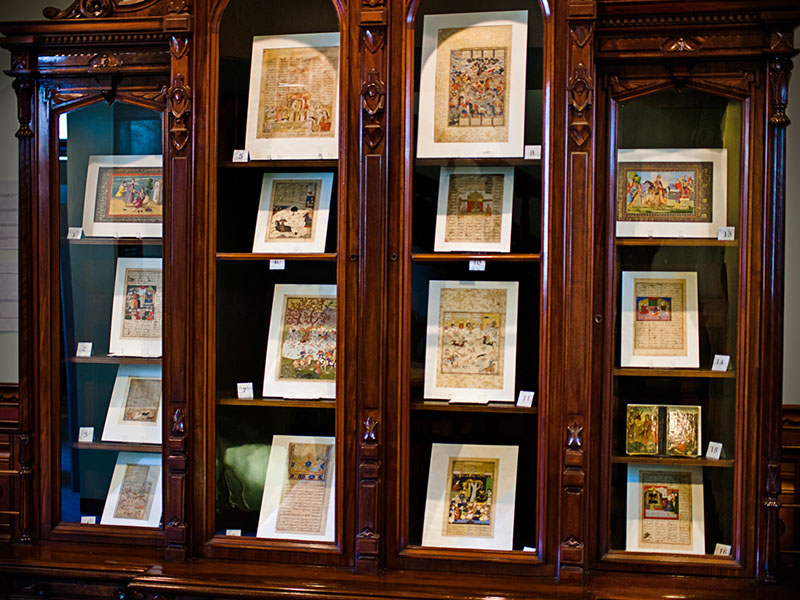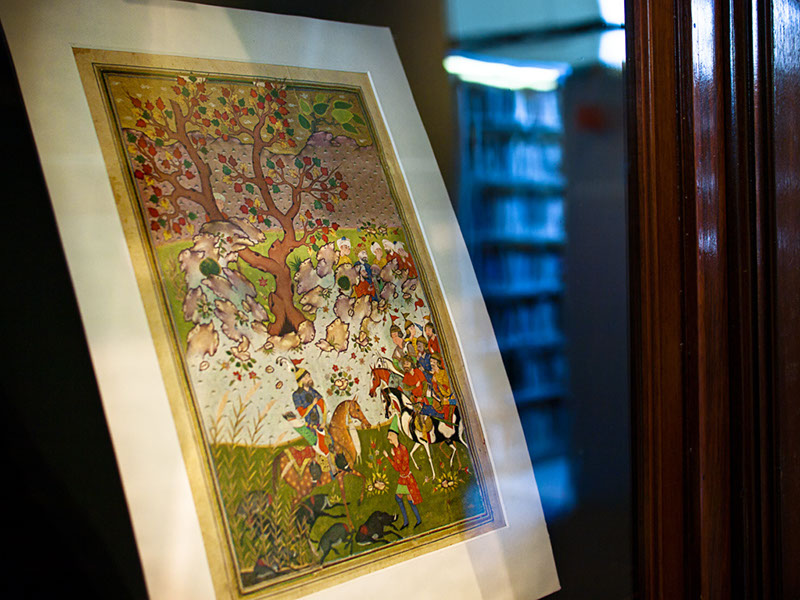Ferdowsi
The Persian poet Hakīm Abu'l-Qāsim Firdowsī Tūsī, or simply Ferdowsi is believed to have been born in Bazh, a village near Tūs in modern day Iran ca. 329-30 AH /940-41 AD. Much about his life is unknown as surviving documentation is sparse. However, we do know that he was a Muslim, was acquainted with Arabic and came from the nobility having independent wealth from the revenues from his lands. His love for Persia and all things Persian persuaded him to write the epic poem, Shahnameh which means Book of Kings.
Shahnameh
The Shahnameh was completed in 400 AH /1010 AD. It took Ferdowsi 35 years to compose his masterpiece finishing it at the age of 81 shortly before his death. The poem is contains 52,000 couplets making it the longest poem ever written. It was written in Persian with some Arabic, though Ferdowsi was careful not to include much Arabic. In so doing, Ferdowsi was able to revive the Persian language as a cultural medium thus preserving the language even after the Arab invasion of the 7th century and the coming of Islam, hitherto a religion foreign to the Persians. This epic poem stresses Persian (literary) history, culture, language and the arts. Shahnameh has numerous tales and ethical stories for which artists and artisans would come to exploit in illustrations for manuscripts, miniatures, and portraitures.
Exhibition
The items in the exhibition come from McGill's Rare Books and Special Collections and Islamic Studies Libraries' holdings, located in the McLennan Library Building, 4th Floor. There are 16 Persian illustrations representing different episodes in the Shahnameh tale. The paintings themselves range in dates from the 14th to the 18th century. Perhaps the most impressive item on display is the Demotte Shahnameh (MS Persian 3) which was painted in Tabriz, in ca. 1350 making it one of the oldest known Shahnameh manuscripts in the world. It is named after the dealer responsible for its dispersion, and McGill is fortunate to have 2 leaves from this manuscript. The remaining specimens vary from individual manuscript leaves to miniature paintings and a lacquer binding.
Exhibit displayed in the Islamic Studies Library, Morrice Hall, 1st floor, from April 1st to October 31st, 2011.
- Photo credit: Klaus Fiedler
Special Thanks
Curator Sean Swanick, Liaison Librarian, Islamic Studies Library, McGill University
Assisted by Anaïs Salamon, Head Librarian, Islamic Studies Library, McGill University
Description of some items based on Charles Melville's Shahnameh website: http://shahnama.caret.cam.ac.uk/new/jnama/page/
Special thanks to Dr. Richard Virr (Head of Rare Books and Special Collections and curator of manuscripts, McGill University) for lending the items and to Donald Hogan (Conservation specialist) for his help with the set up of the exhibition.
We would also like to thank the following library staff for their graciousness. In particular, Ed Bilodeau, Megan Chellew, Greg Houston, and Elizabeth Thomson.




